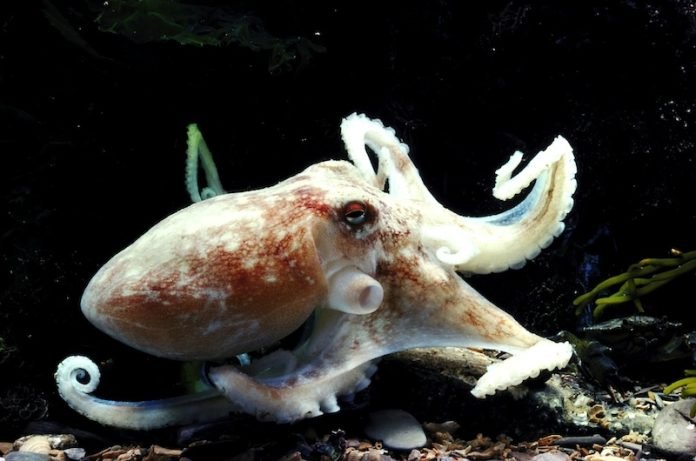
In the depths of the Western and Indian Oceans, the greater blue-ringed octopus is a marvel of nature, known for its incredible ability to change the size and color of the blue patterns on its skin.
This unique feature, used for deception, camouflage, and communication, has caught the attention of researchers looking to mimic these capabilities in technology.
Inspired by this octopus, scientists have developed a new type of deception technology that could revolutionize fields ranging from the military to medicine, and from robotics to sustainable energy.
This new technology, detailed in a study published in Nature Communications, takes advantage of the octopus’s natural abilities to change its appearance.
By creating devices that can dynamically adjust their fluorescence and spectroscopic properties, the researchers aim to provide versatile applications that are easy to manufacture and can be scaled up to cover large areas, such as vehicles, billboards, and even buildings.
The team behind this innovation, led by Alon Gorodetsky, a professor of chemical and biomolecular engineering at the University of California, Irvine, crafted devices that feature a thin film mimicking the octopus’s skin.
This film consists of blue rings on a brown background, capable of changing appearance in response to electrical stimuli.
The film is sandwiched between a transparent proton-conducting electrode on top and an acrylic membrane with another electrode beneath it.
At the heart of this technology are designer molecules called nonacene-like molecules, chosen for their remarkable stability and optical properties.
Unlike other acene molecules, which are organic compounds composed of linearly fused benzene rings, these nonacene-like molecules can withstand long periods of storage in air and continuous exposure to bright light without degrading.
This makes them particularly suited for applications that require durability and reliability.
The development of this octopus-inspired technology opens new avenues for camouflage and signaling systems. These devices can change their visible appearance hundreds of times without significant degradation and can even repair themselves if damaged.
Such capabilities could provide military equipment with better concealment options, enhance medical devices with new functionalities, and lead to more efficient energy systems, among other applications.
Moreover, the research team, including contributors from Boston University, demonstrated that the responsive properties of these devices could be predicted computationally.
This finding suggests that similar technologies could be designed in the future using computer simulations, further expanding the potential applications of this bio-inspired innovation.
The work, supported by the Office of Naval Research, the Defense Advanced Research Projects Agency, and the National Science Foundation, marks a significant step forward in the development of materials and devices that can adapt and respond to their environment, much like the natural world that inspired them.
The research findings can be found in Nature Communications.
Copyright © 2024 Knowridge Science Report. All rights reserved.



